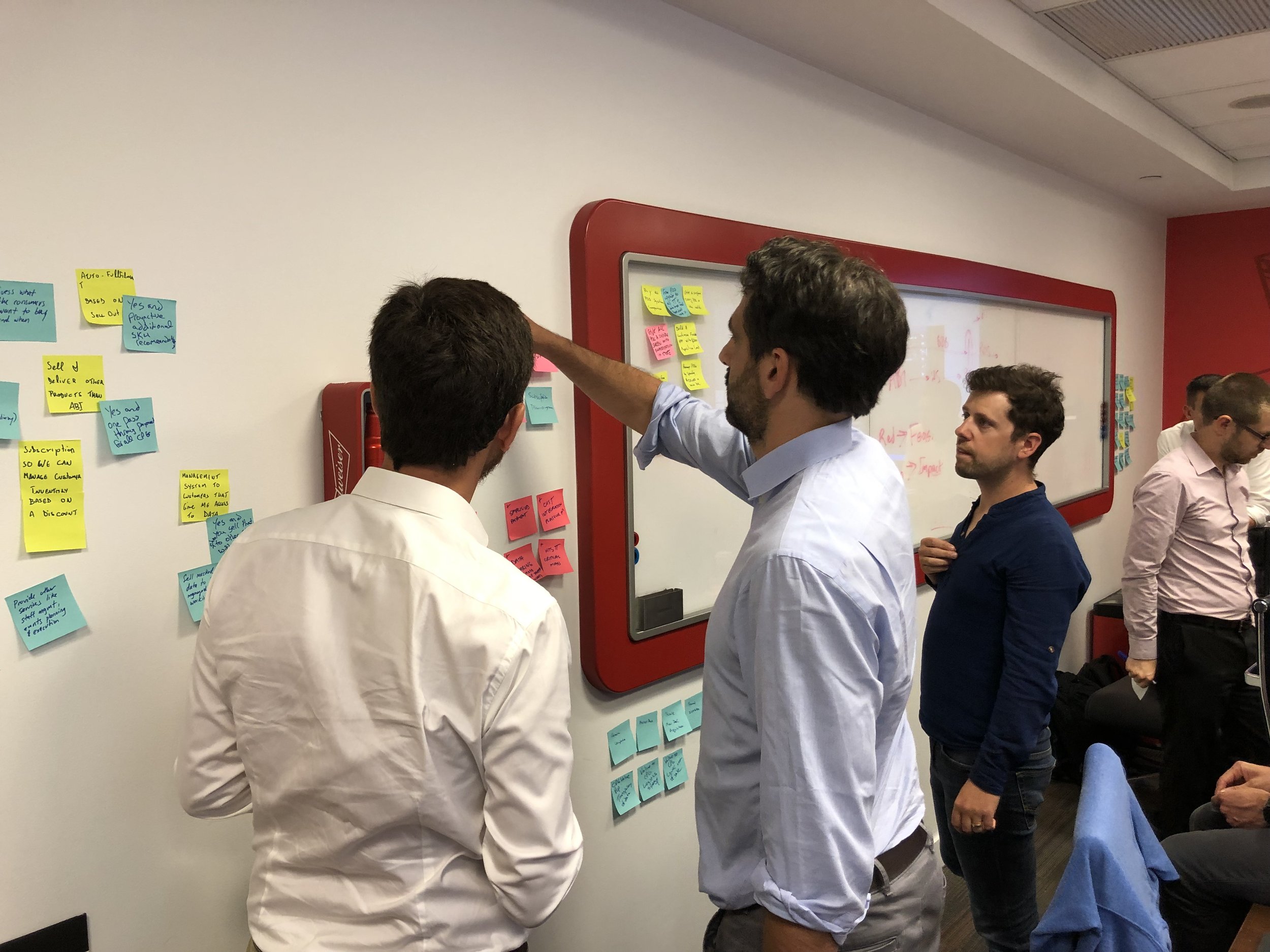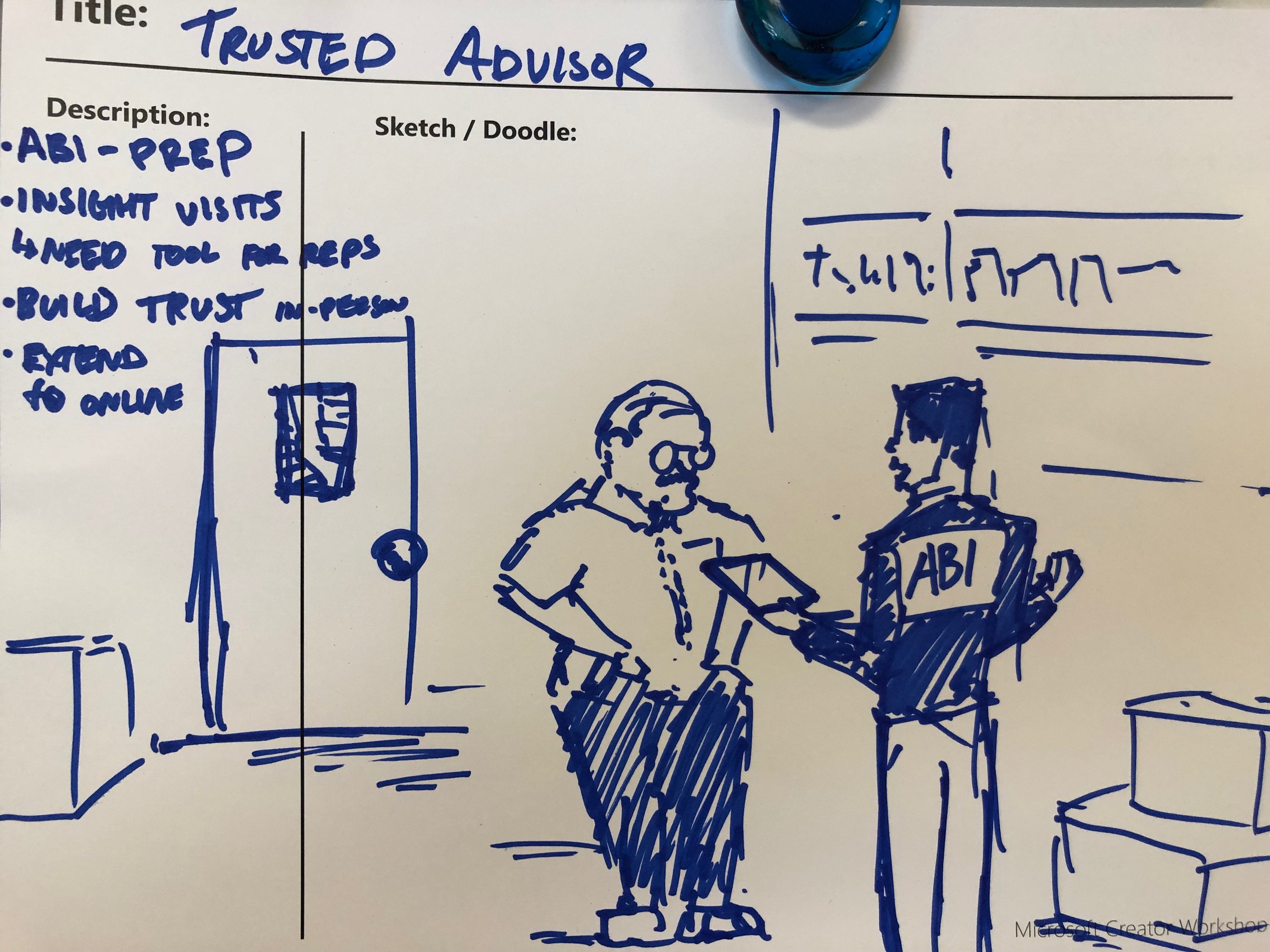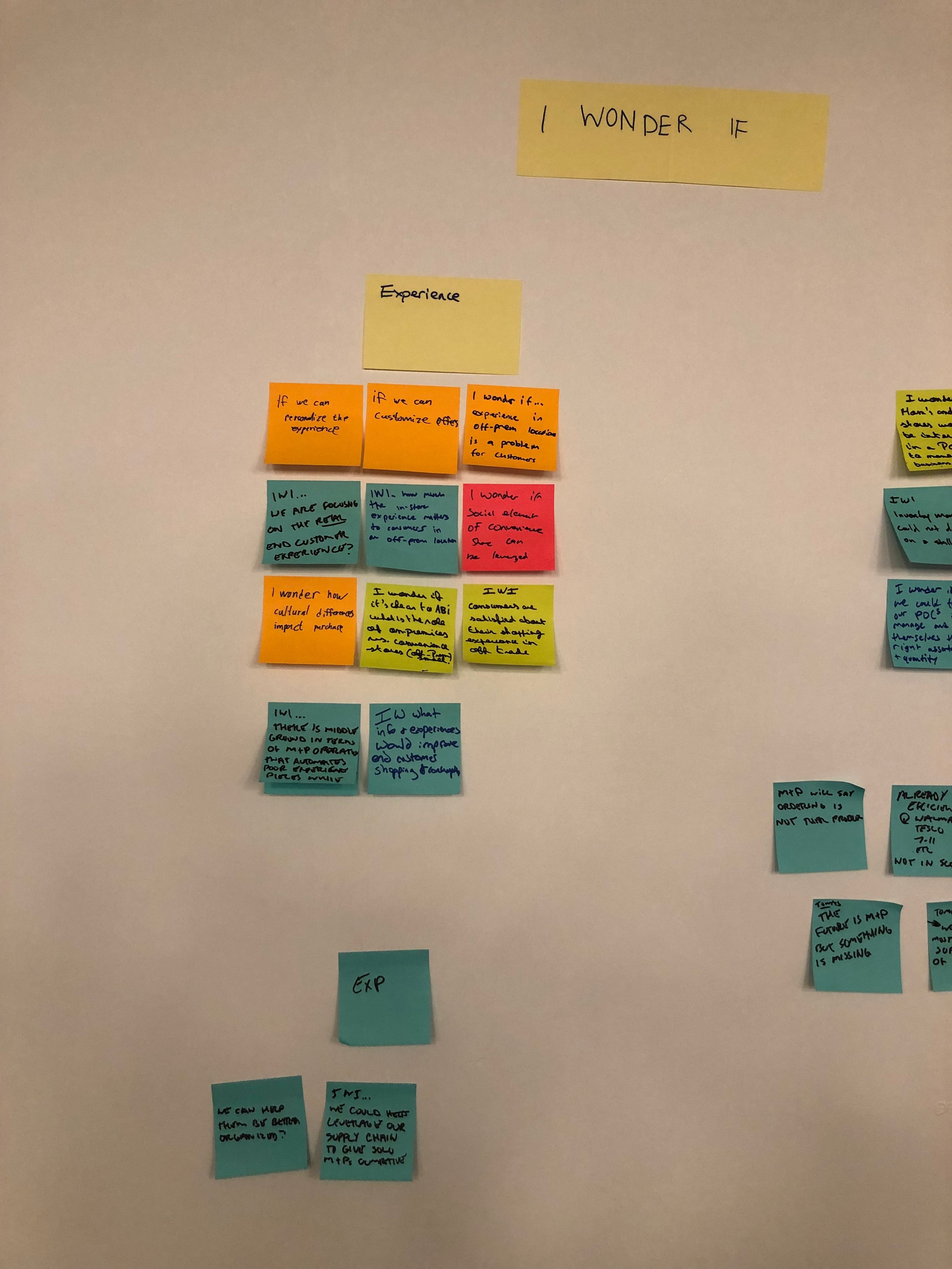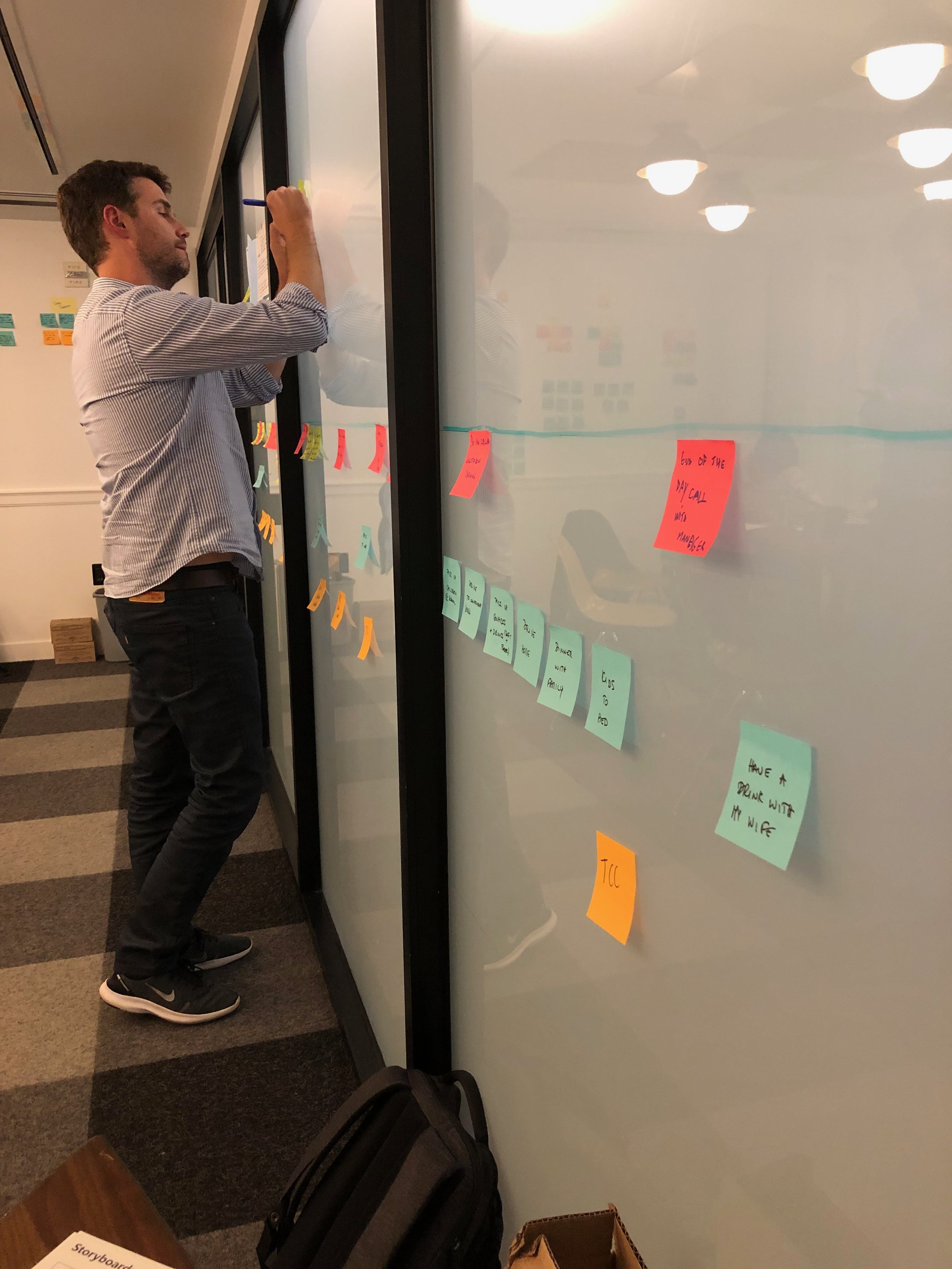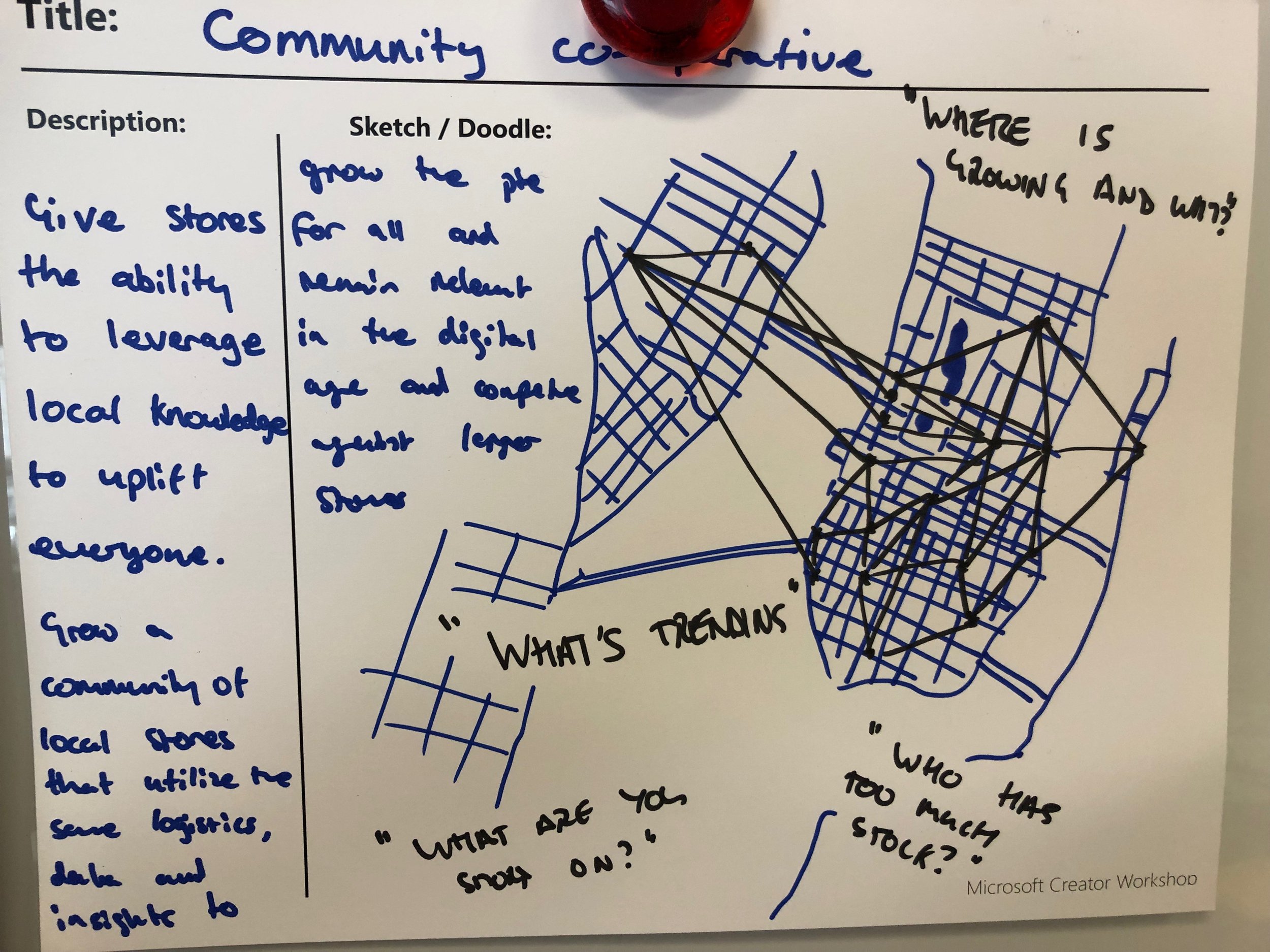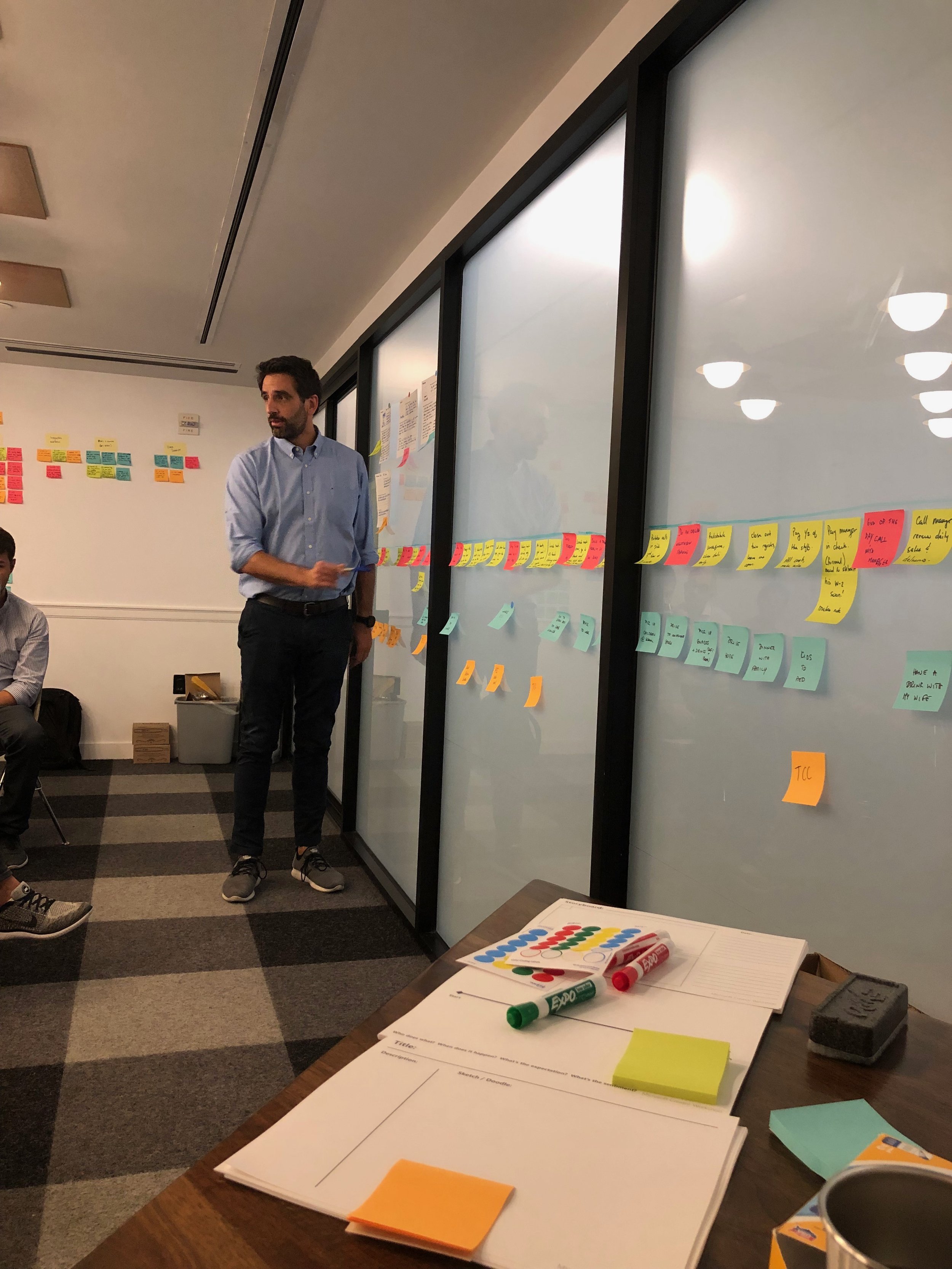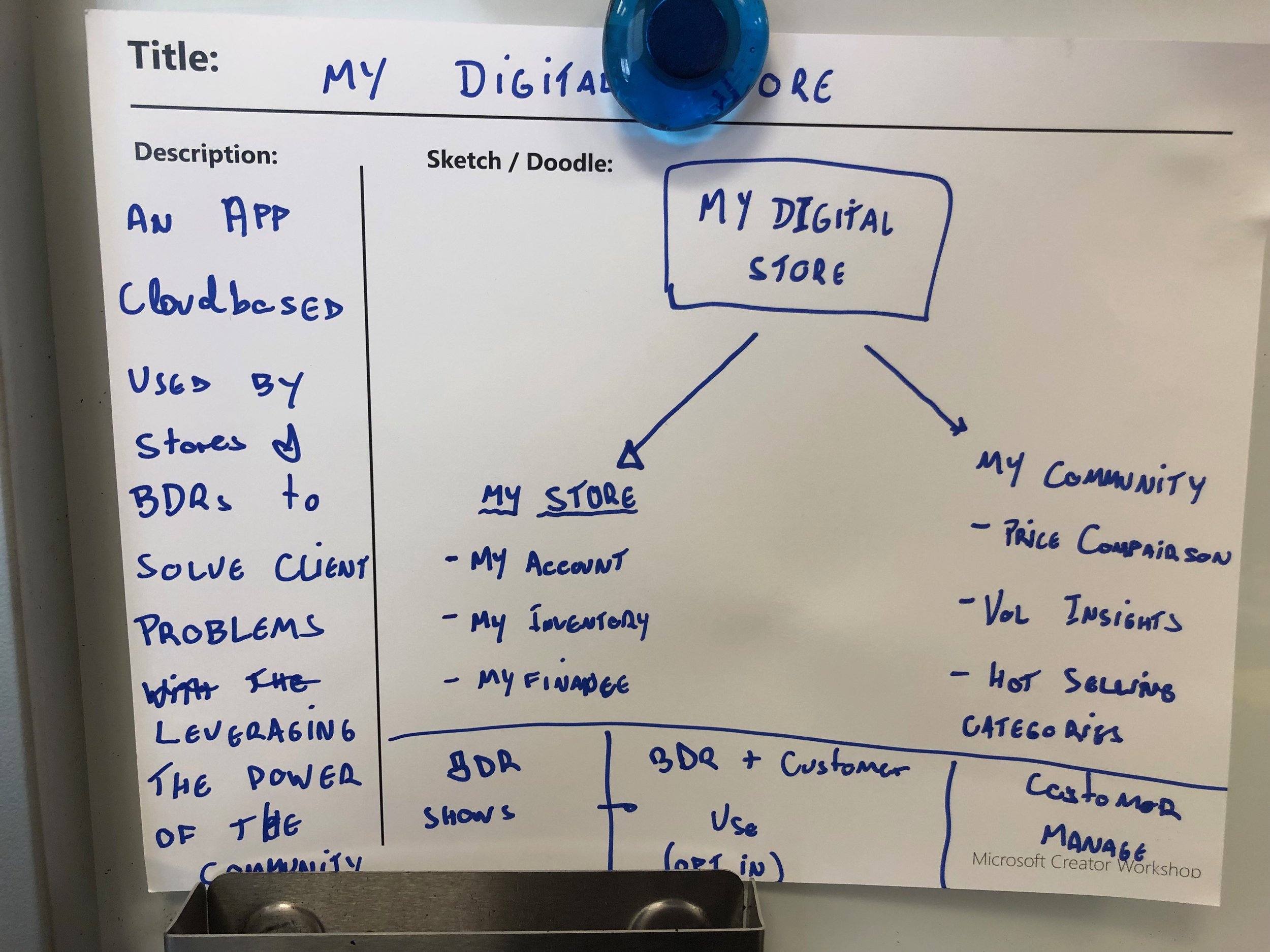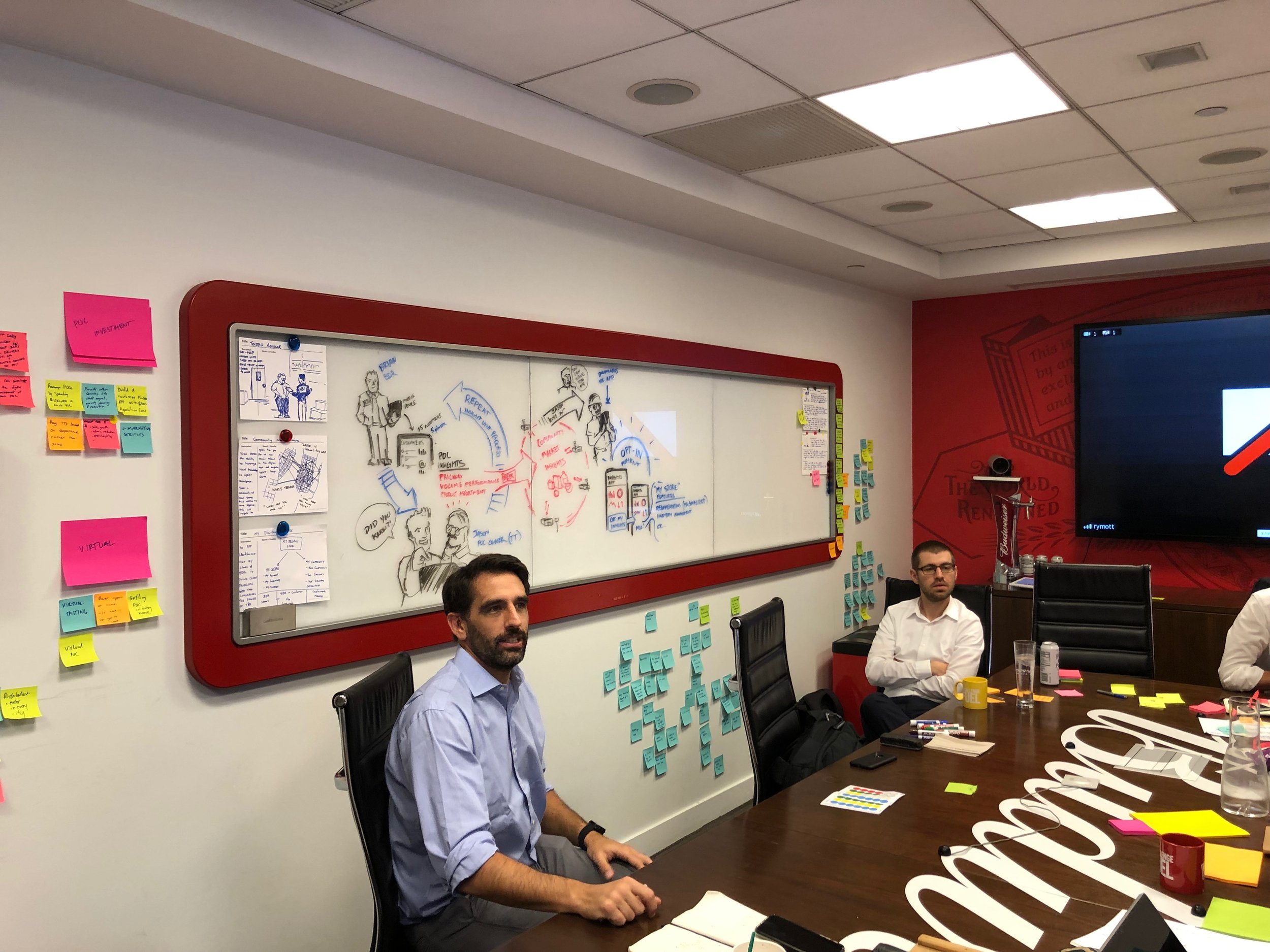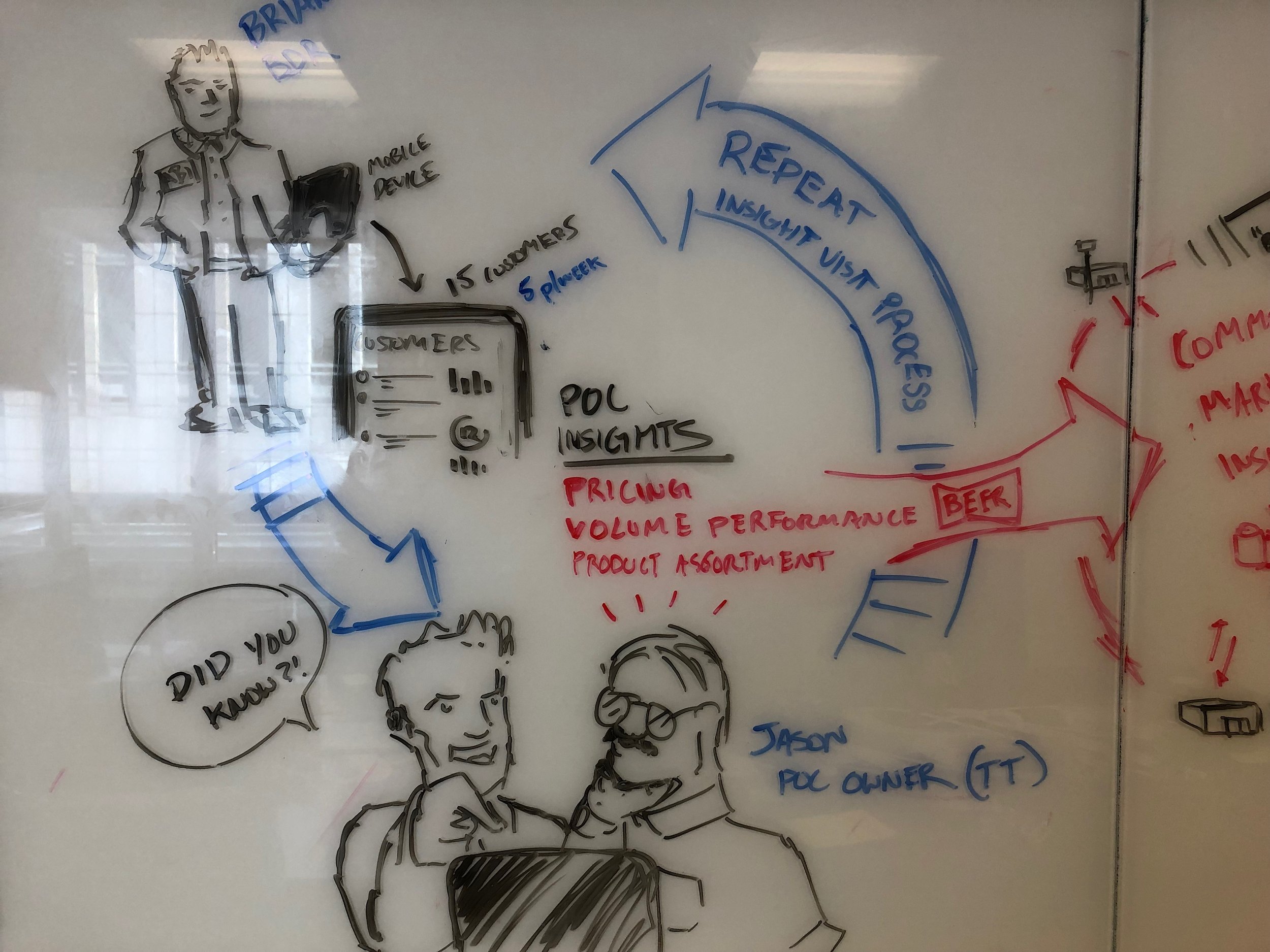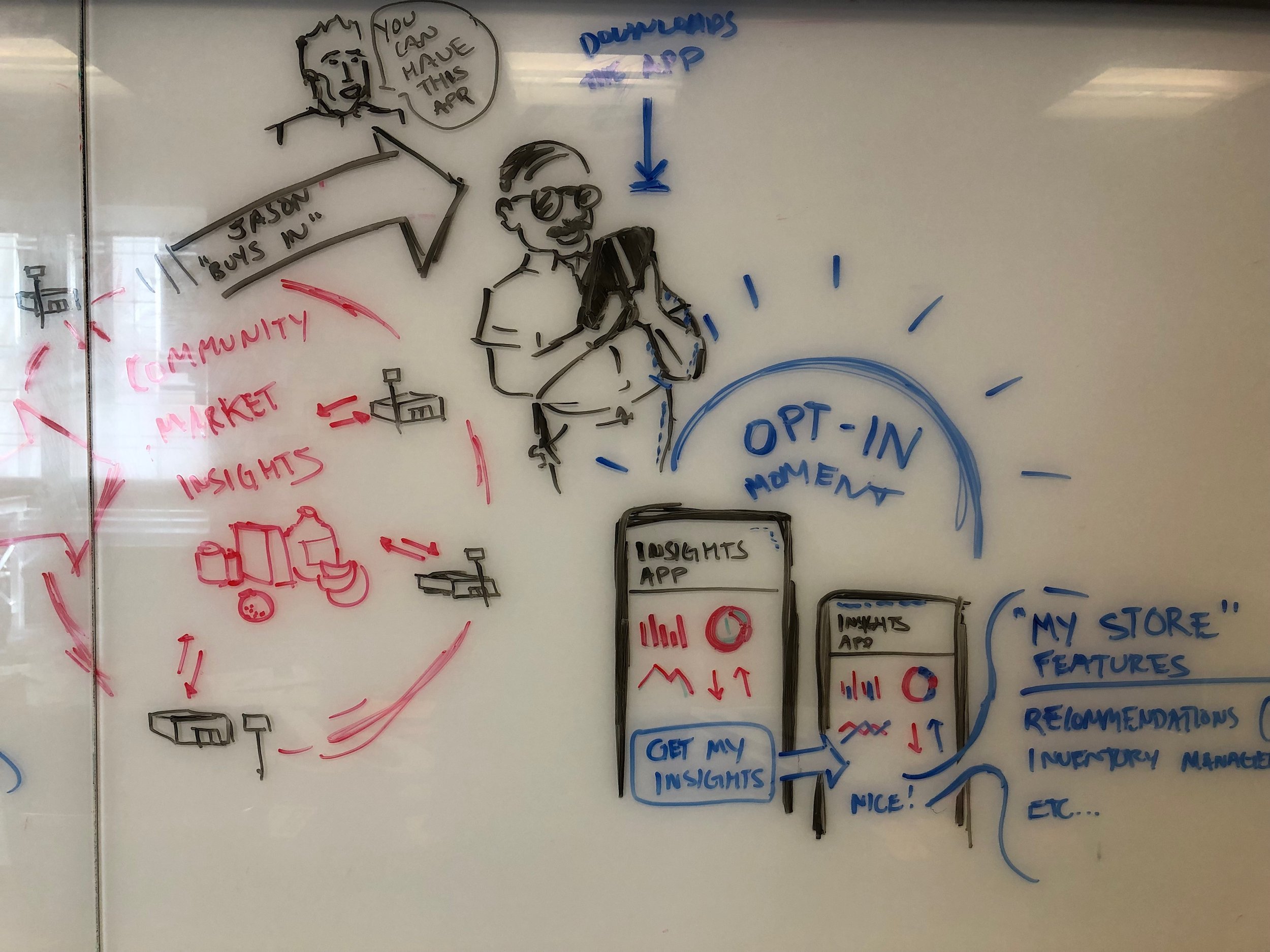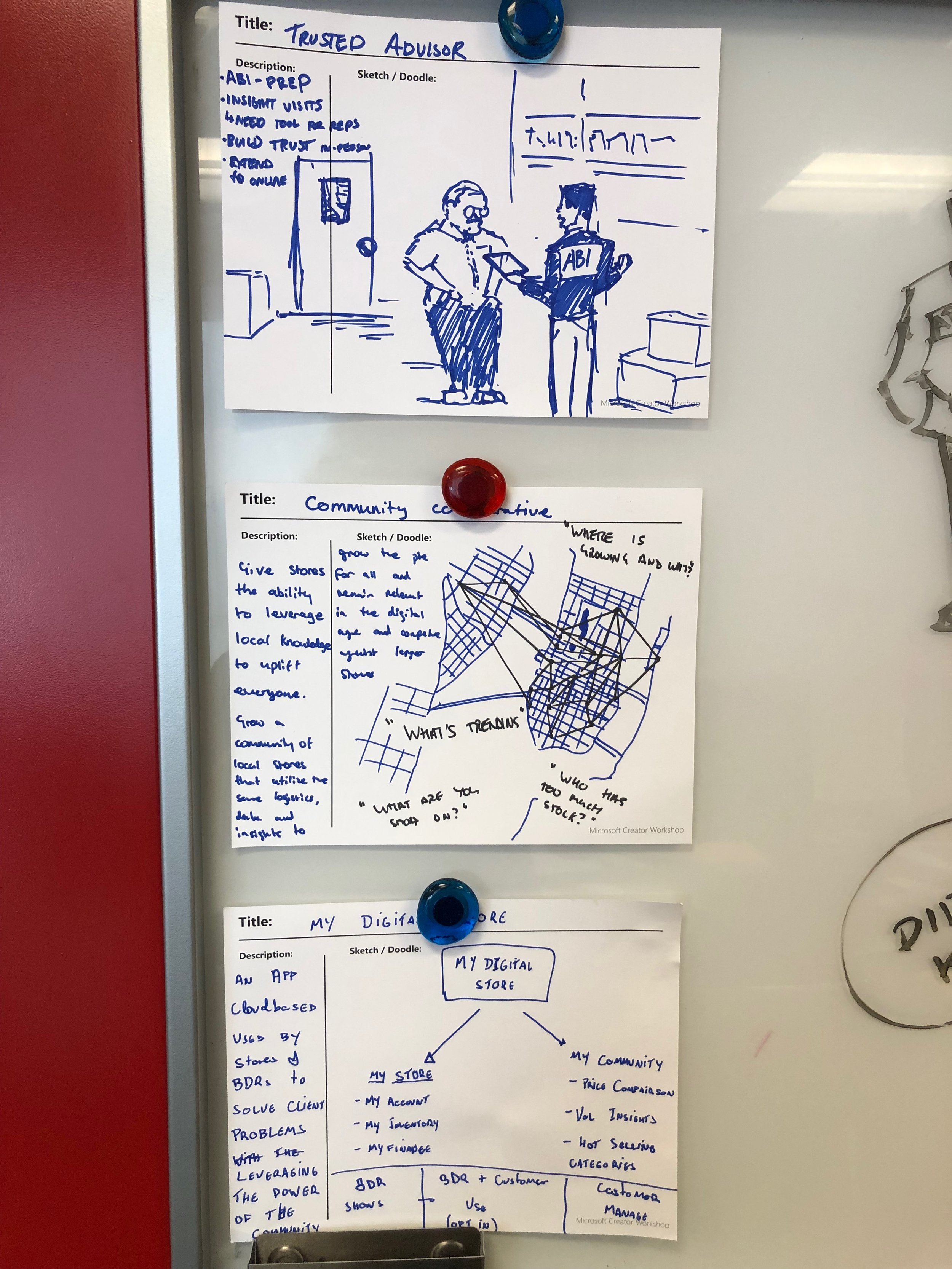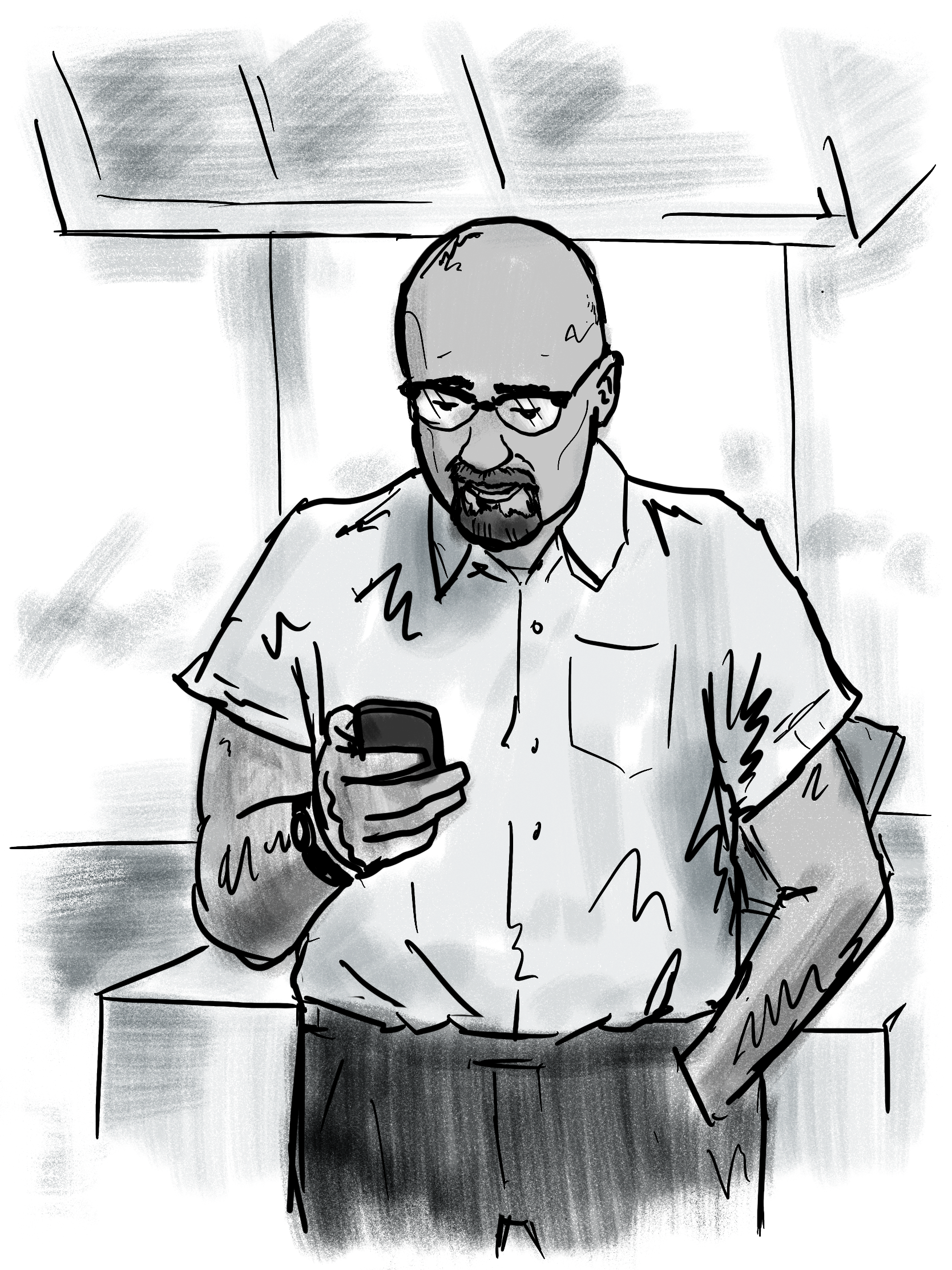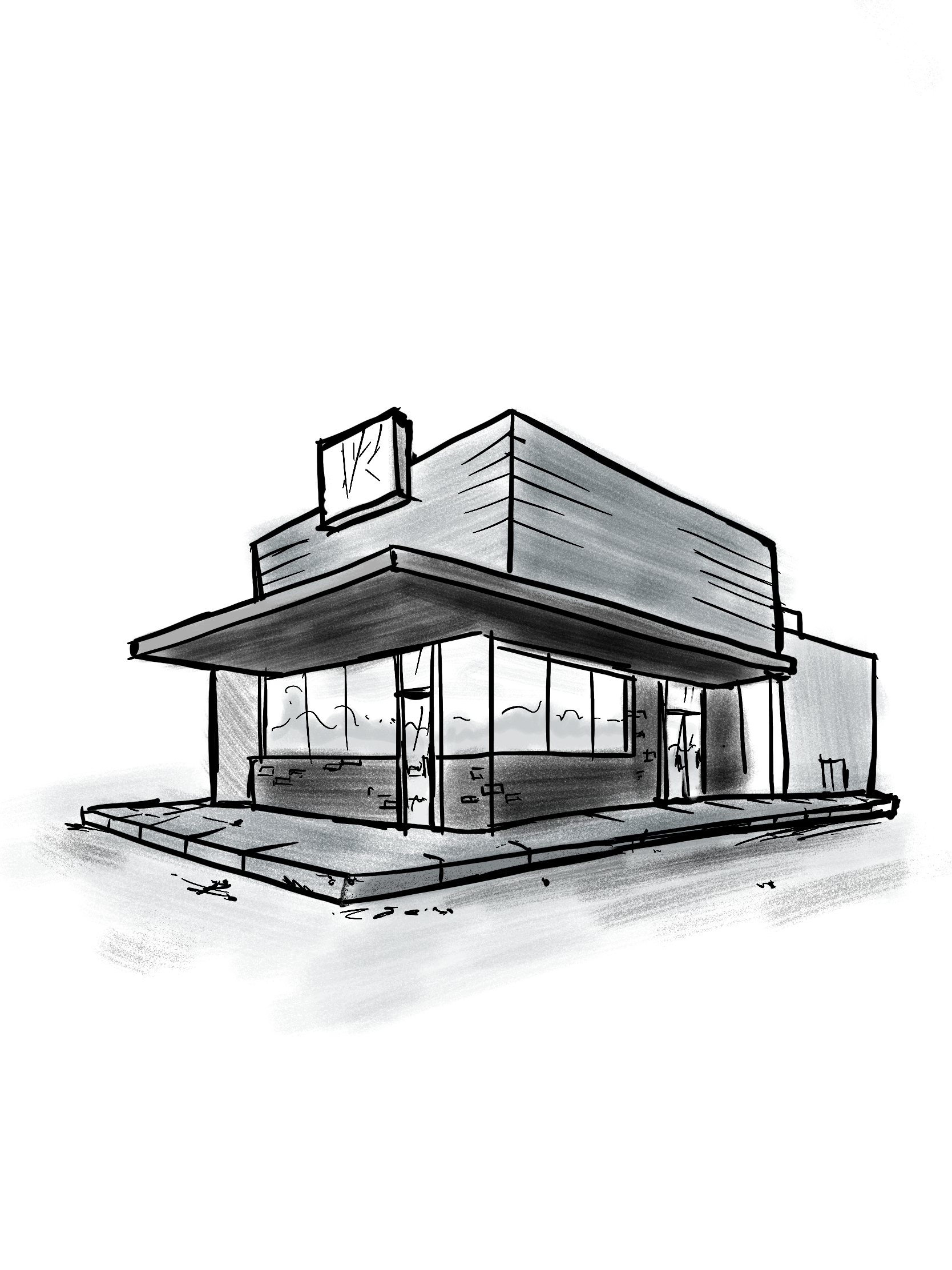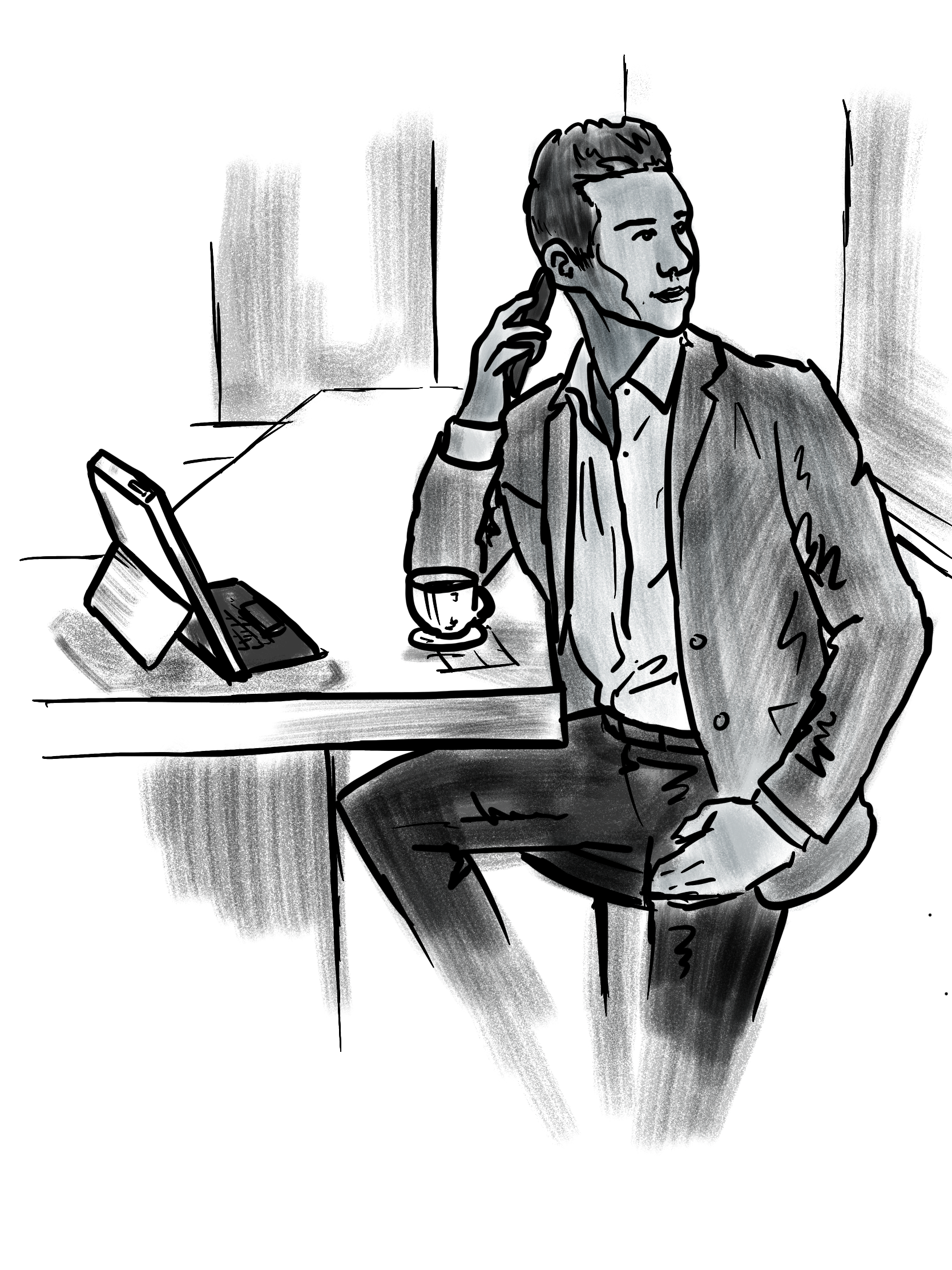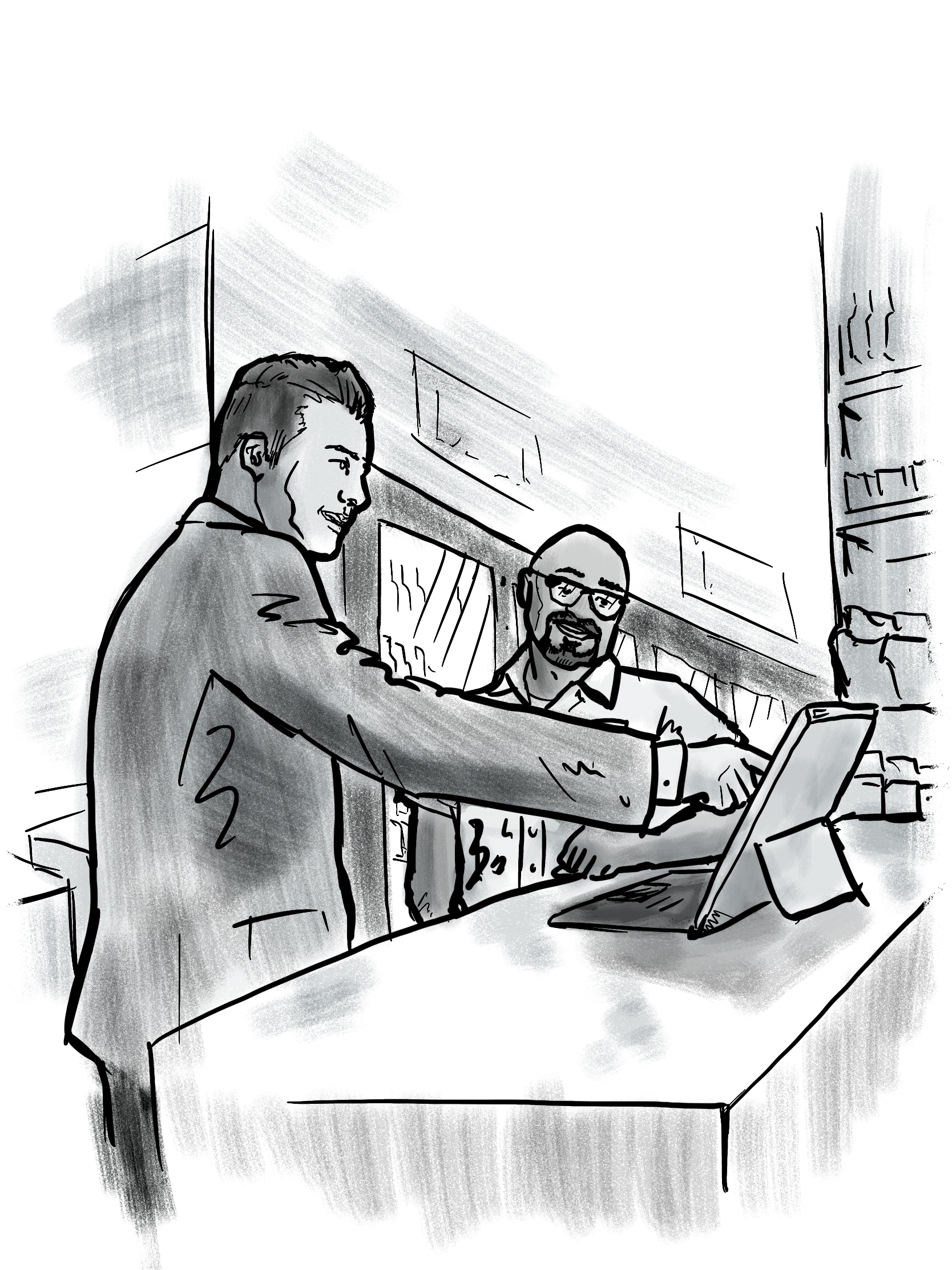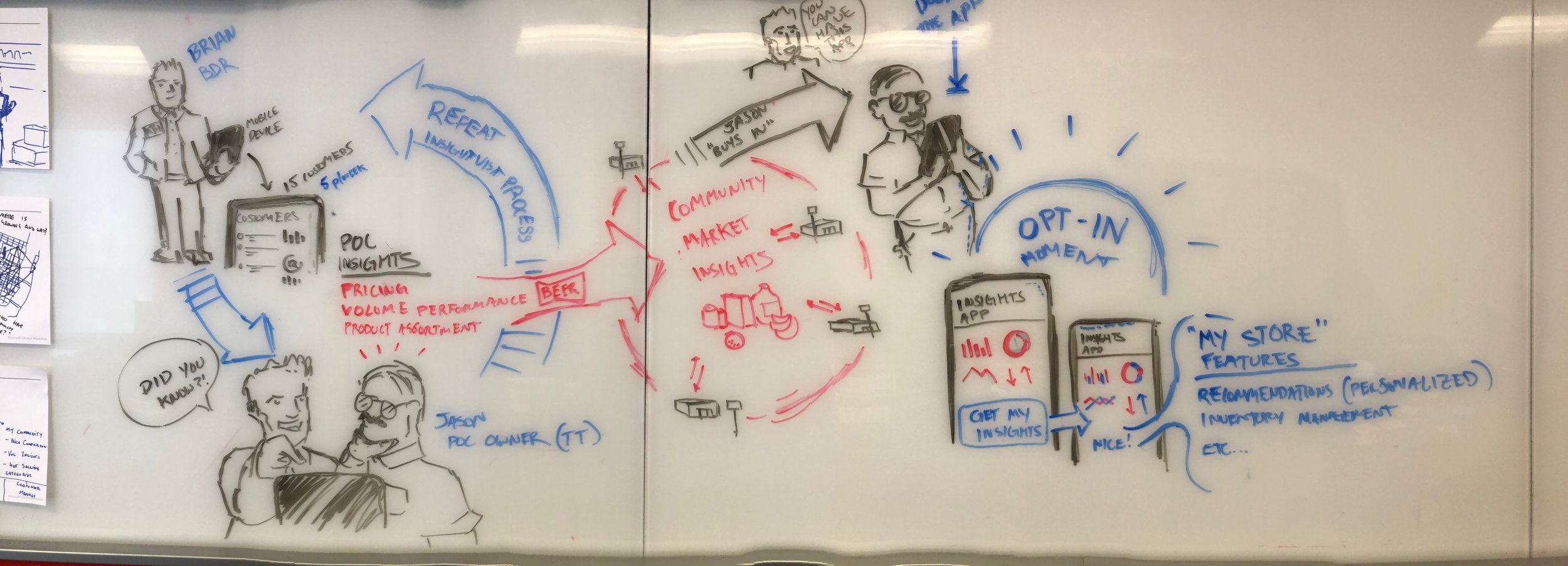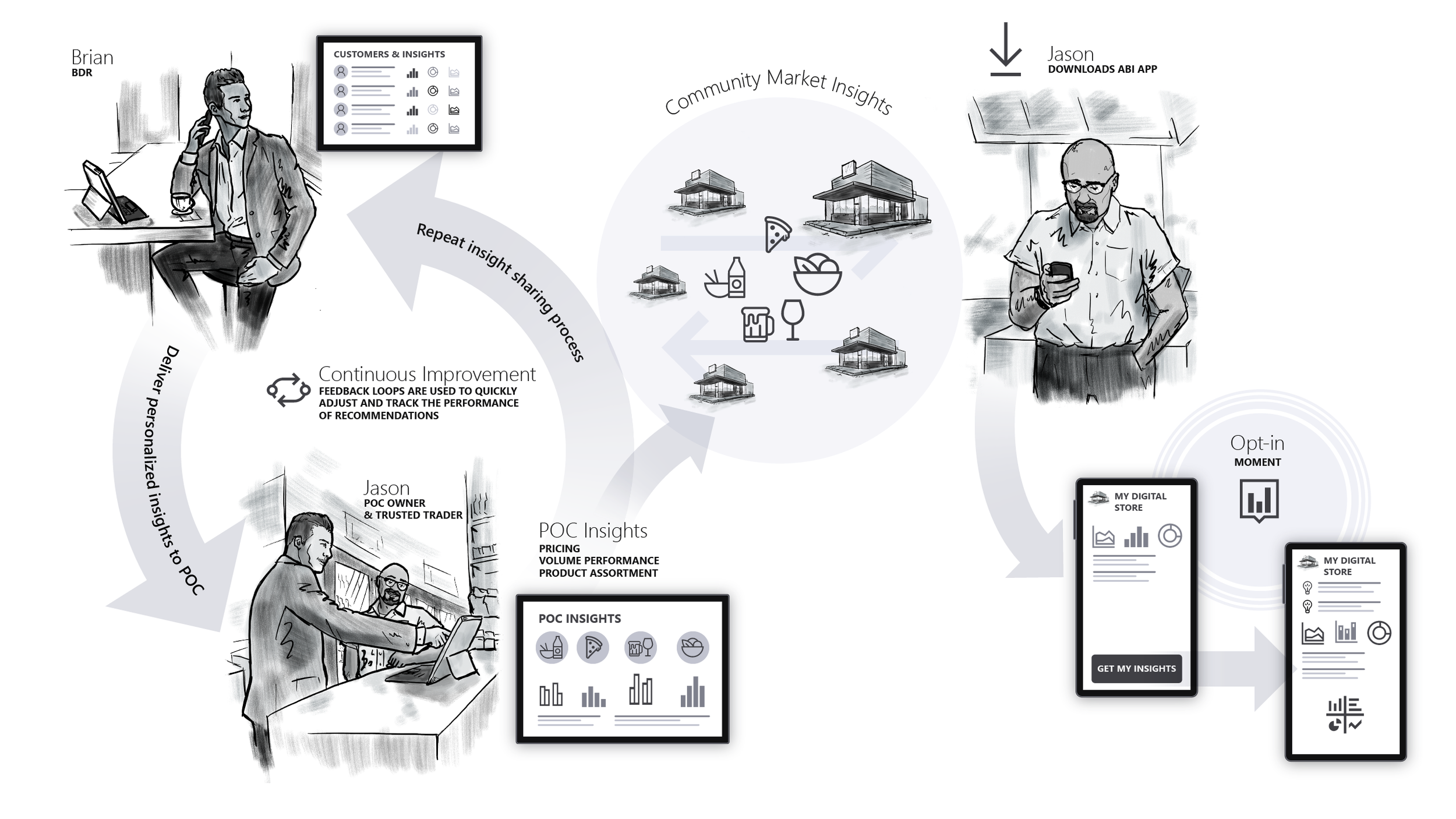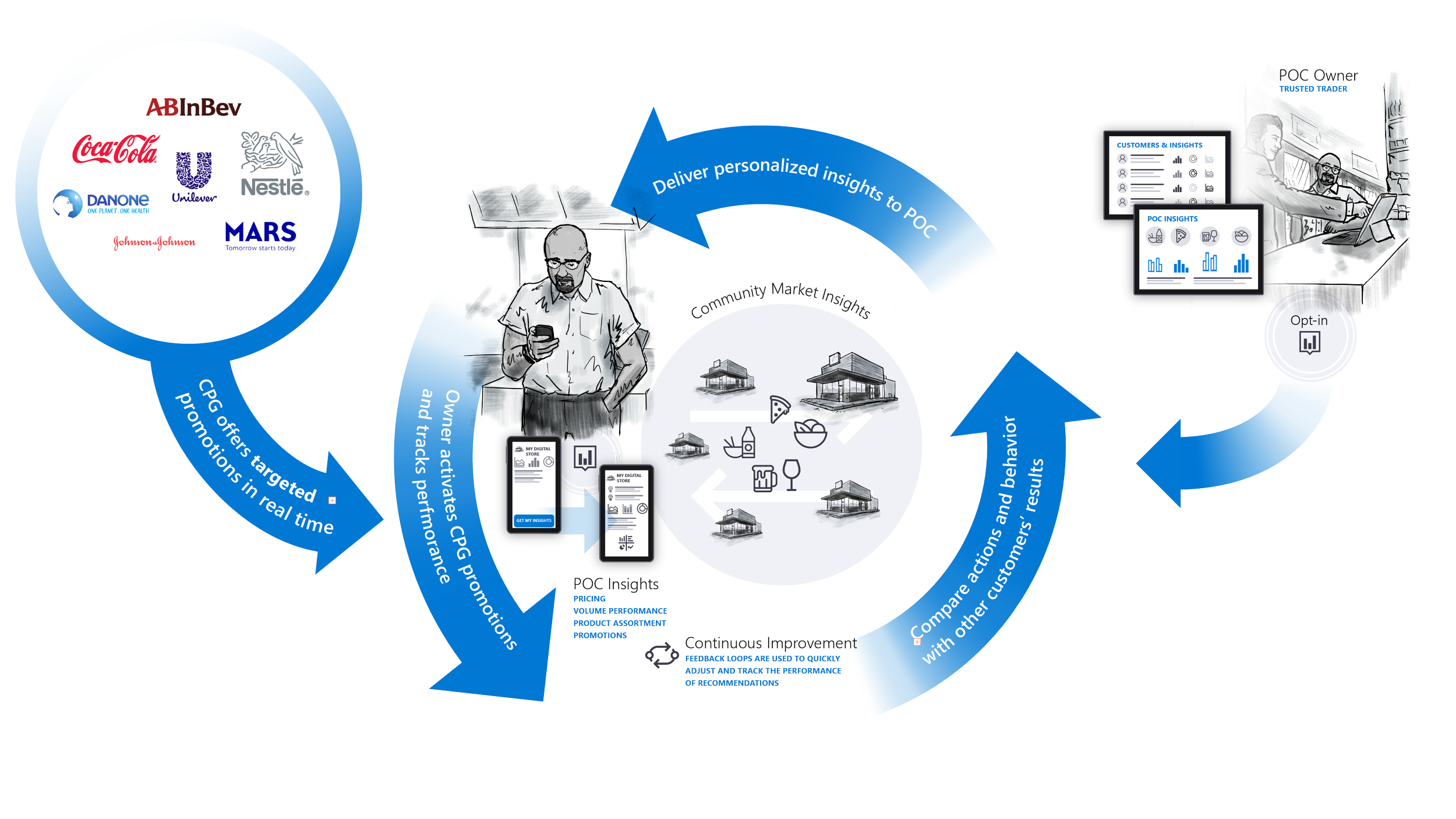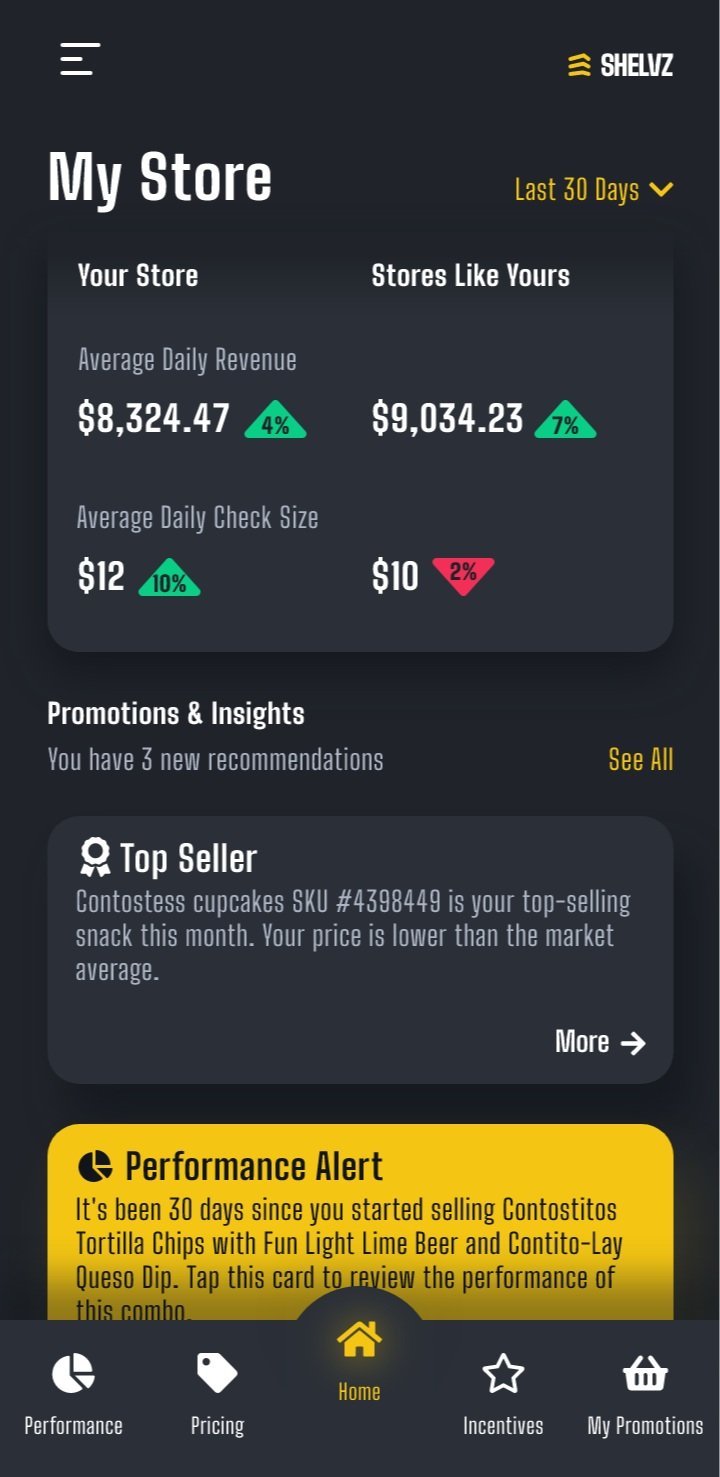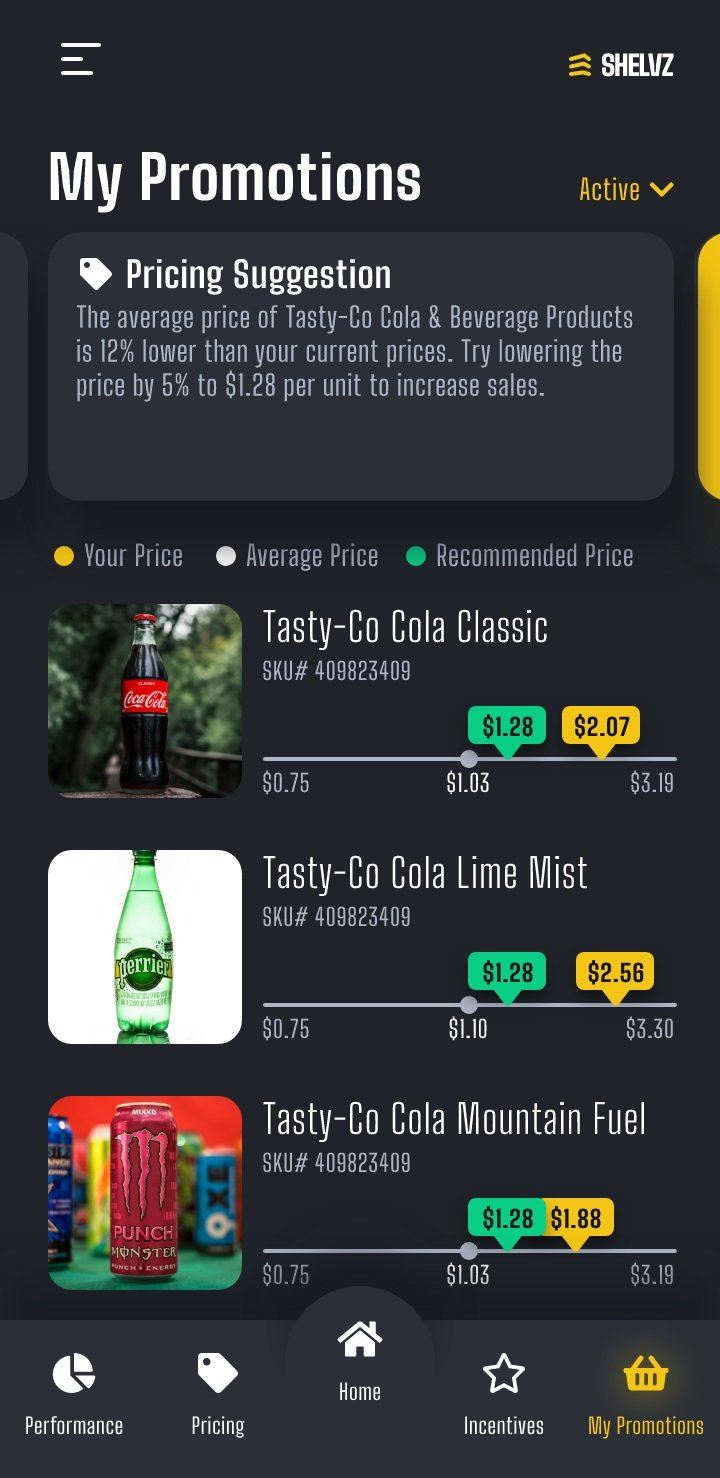Anheuser-Busch InBev | Shelvz
CONTEXT
Beer Me
Anheuser-Busch InBev (AB InBev) is the largest brewer in the world and owns approximately 630 beer brands in 150 countries. There are over 6 million traditional trade businesses, and they represent a trillion-dollar market struggling against the superior logistics, operations, data & business intelligence, of large retailers. These small businesses are the lifeblood of AB InBev’s distribution network. On average, a small business in this niche will shutter its doors inside of 18 months. In this increasingly brutal market, suppliers and distributors alike, often struggle to understand their product sales, competitors’ strategy, and the needs of their customers.
Summary
Over the course of an intense 3-day design thinking workshop and a roughly 6-week project, we designed a multifaceted solution for AB InBev’s most important customers, traditional store owners. The solution uses a combination of data, business intelligence, and machine learning tools, and was supported by AB InBev’s logistics operations, to develop a platform for retail that will empower communities of independent stores. As part of a small team, my role in this project was to co-facilitate a design thinking workshop, storyboard our ideas, conduct user research, design the primary user experience, and to provide creative direction for additional experiences. At the conclusion of the engagement, my designs were highlighted in a showcase, as part of a CEO Co-Innovation partnership between Microsoft and AB InBev.
The final experience was captured in a unique combination of storyboards, workflows, and software architecture.
PROCESS
Concept Design & Workshop Approach
We conducted an intense 3 day design thinking workshop with key stakeholders from AB InBev. Interestingly, the team from AB InBev had done some design thinking work already, but invited the us because they were hoping we had a “magic bullet” (some kind of Microsoft tech) that could solve their problem. Using a variety of ideation exercises, we helped AB InBev understand they were focusing on symptoms, rather than the cause. The symptom was a lack of store owner data, but the problem was AB InBev relationship with store owners lacked depth and trust. After a full day of ideation and experimentation on Day 1, we took to the streets. That evening, I lead one of several small groups to conduct user interviews with any willing store owners. As it always is, the experience of talking to users was eye-opening and by the end of the 2nd day, we had learned several critical things:
AB InBev hadn’t considered its significance (when compared to other suppliers) with store owners. It was easy to assume as the largest brewer in the world, that they carried a great deal of weight amongst store owners. However, AB InBev lacked the kind of importance they needed to have with store owners because they comprised such a small percentage of inventory (and store revenue). In other words, AB InBev was just one of many suppliers. If beer and wine sales were of little importance to the store, then AB InBev had even less relevance to the owner. This learning was the most important breakthrough of the session — we needed to understand how AB InBev’s customers viewed their relationship and that it would need change if to have a chance at success.
AB InBev had the infrastructure, business partnerships, and technical expertise, to understand large-scale trends and in-depth industry data. What they lacked was a regionally specific ground-level view of store owners and how they conducted business with AB InBev. As it would turn out, each persona in the journey (AB InBev & store owners) had something to offer each other: data.
The cutthroat market (that only worsened after COVID-19) and store owners struggle to compete against larger, technologically superior, retailers — many small businesses closing within 18 months. Learning this reinforced the idea that if AB InBev could arm their network of distributors with meaningful market intelligence, they’d be strengthening that network and fundamentally growing their relationships with store owners.
Mission
By the end of Day 3, we had identified the core opportunity and storyboarded several exciting potential solutions. In this case, we defined the problem and restated it as a question or “How might we.” The statement was:
How might we use data, business intelligence, and machine learning tools, to build credibility and value with store owners via guidance and insights from AB InBev and, in exchange, unlock the customer intelligence they needed.
In other words, if we developed a valuable relationship with store owners, then we had earned the right to provide guidance in exchange for a vast wealth of store owner data and insights.
Revelations
Creating the aforementioned “how might we” is one of my favorite parts of designing a new solution. It’s the moment I get to show the everyone on the team that their patience and hard work has been rewarded with a clear picture of the future, and with storyboards or concepts in hand, we can literally see where we need to go. Early in a large project there is a mixture of pressure from things like timelines, budgets, and business leadership, along with the general excitement that comes with big expectations and new ideas. Staying disciplined in the early stages is often the most difficult part of the process. For AB InBev, the revelation was that they needed to provide a new type of product (competitive intelligence) to their customers in order to get something of equal value in return. For me, the revelation was trusting my process in the face of skepticism and the power of visualization. If you’re interested in my workshop facilitation technique and product design approach, check out the work from the agency AJ&Smart and the book Sprint by Jake Knapp.
DESIGN
A Magic Bullet
Now that we had our vision, it was time to deliver. AB InBev wanted to own the development of the app, so our goal was to design an experience they could build and continue to test with store owners. With approximately 4-5 weeks remaining in our project timeline, I got to work creating designs and our technical leads focused on the data architecture.
Selected Designs
Features & Highlights
Below are a few of my favorite app features that directly addressed our larger mission (the “how might we” statement, mentioned earlier in this case study).
Valuable Exchange
Store owners needed a reason to engage with AB InBev beyond the usual transactional interactions (ex: a sales rep takes down an order from a store owner). So, powered by AB InBev’s backbone of industry intelligence, operational excellence, and partnerships (i.e. large food and beverage manufacturers), the first thing users see is a compelling summary of how their store is performing. Each layer of the app experience provides a litany of data that helps store owners make better decisions about pricing, based on competitor activity, industry trends, store size, store focus, etc. The result was that store owners were happy to exchange their anonymized data for the competitive advantage they’d gained, in return from AB InBev.
Relationship Status
By positioning AB InBev as a partner, rather than just another supplier, the relationship between the brewer and its store owners can evolve and grow beyond the transactional. The store owners gained valuable insights and improved their businesses. AB InBev received unprecedented visibility into a key facet of their business network and shifted the typical interaction from merely transactional, to a mutually beneficial partnership. In the long-term, expanding the type of relationship they’ve had with store owners will have the greatest impact on their business.
Promotions
AB InBev had little control over how or if their promotional offerings were being used. Many worried promotions were being mishandled or outright abused. To address this, I designed the platform to feed promotions through the app, provide measures of success & reporting, and actionable suggestions, based the combined data of AB InBev and app users. By funneling promotions through the app experience, AB InBev received visibility, control, and performance data, eliminating a glaring blind spot and exploitable vulnerability.
Performance
Neither AB InBev nor store owners could make decisions without having a robust understanding of the consequences of their actions. By measuring the performance of everything from stores, sales, promotions, seasonality, etc. both parties become incredibly agile. In other words, the solution eliminates a guessing game and replaces it with valuable insights and intelligence. For example, if a specific promotion was working wonders in one region, AB InBev could test it in others and compare the results. Meanwhile, store owners could see how their actions were driving (or harming) their business with a much higher degree of accuracy. Like many Big Data solutions, the more users the platform gains, the better the insights get.
Interactive Prototype
Note: depending on permissions settings, this link may not work for all viewers



